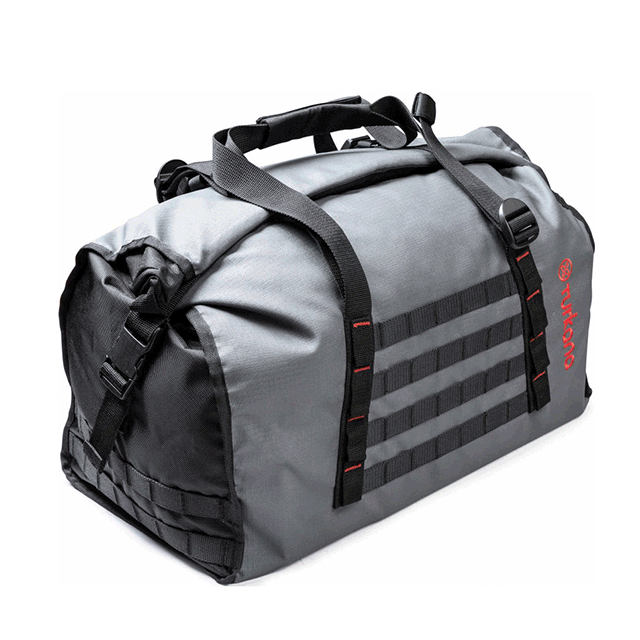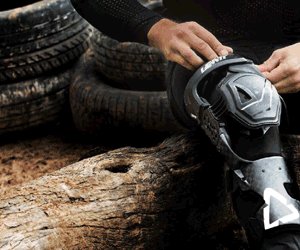With legendary helicopter footage of riders speeding through the African landscape, making it look effortless, it could be easy to ask what does it take to ride a massive twin-cylinder ADV bike from Monaco to Dakar. But Paolo chuckles to himself when asked this question. “Easy? Nothing is easy, everything is always more difficult than expected, you must never take anything for granted. The biggest surprise to me though is that, despite my age, I managed to finish the race without much effort. Thanks to the experience of the previous editions, I arrived physically and mentally ready to face the race in the best way possible. In the end, I was faster than the first stages, and I was making fewer mistakes, a sign that my concentration was good and still had a lot of energy.” – Paolo Caprioni, Team Kapriony rider

The Africa Eco Race is an annual rally raid organized in the North of Africa. In fact, it is a direct answer to the cancellation of the 2008 Dakar Rally that subsequently moved to South America and was held in Saudi Arabia for the first time this year. The main aim of the event is to create a platform for those contenders who wanted to live the original Dakar spirit. The sense of fraternity, solidarity, and friendliness that are hallmarks of African Rally Raids so popularized in previous decades.

The “boss” of the Africa Eco Race, Jean-Louis Schlesser, has been content with the rise in popularity of the event. “I am happy to see that the race is still growing with over twenty percent more participants this year. Especially, I notice the increasingly international reach of our rally with thirty-four countries and five continents represented for this twelve edition. I am also glad that the amount of bikes has doubled, and the quality of the teams participating has significantly risen. The two-wheel competition is exciting, but not only. In the SSV category, over twenty participants will appreciate the challenge, especially with good friends that will be racing in areas they know very well. I am also looking forward to seeing the results in the truck category, which is always impressive with the spectacular images we catch.”

Paolo, however, had his own agenda “The primary objective this year, for the fourth consecutive year, was to be able to ride down the wonderful Dakar beach. This year the project bike was completely new and had two major aspects. The first was to use the brand new KTM 790, which we purchased as soon as it entered the market and renamed as Frusta or Whip in English. The second, which has proved to be an ongoing project, was to test a brand new Italian patent system on it. The AirTender, a system applied to the rear shock absorber that replaces the original spring with a stiffer and shorter one and combines it with a progressive air system. The development of these aspects was completely new and therefore still ongoing. So we needed a real rally to truly test the system and improve them in the best way.”

“This year, there was not a very complex strategy planned out for the race itself. Mostly because we knew very well that the first few days and the first stages would serve to understand how to manage better and set up the new bike and the AirTender system. It was necessary not to give to much importance to our ranking at first. Even if, for a rider like me, it is always a stimulus to look at and try to improve my overall standing. Even when it is not the primary objective, the idea was, therefore, to set up the bike as best possible in the first stages without losing too many positions. Then try to improve our general position in the rankings during the second part of the race. It was obvious that leaving for the Africa Eco Race with the development of the bike still in progress was going to be a huge disadvantage, and an additional difficulty we would have to face.”

“The biggest challenge is always the main one though: to complete the race. Team Kapriony races exclusively with large-displacement two-cylinder motorcycles. Even a professional rider could not aspire to the podium with this type of bike contending against single-cylinder machines. Especially when you consider the weight, the difficult terrain and the poor handling of a machine of this class in these conditions. The Africa Eco Race is a one-of-a-kind race: bringing a twin-cylinder from Monte-Carlo to Dakar is both a technical challenge for the team and a physical challenge for the rider.”

And indeed, this race was not without significant challenges and setbacks for Paolo.” Stage eight was by all accounts an apocalyptic stage. Everyone agreed, especially the organizers, that is was the most difficult in the twelve years of event. The sandy terrain had not been windswept in the previous days, which meant the dunes were covered with soft fesh-fesh, or soft dust, that made the going extremely tough as competitors set off at seven-thirty am from the bivouac in Aidzidine.” Paolo started from the twenty-sixth position with the Frusta’s engine completely refurbished due to mechanical issues that arose in the previous stages. Around the 60 mi / 96 km mark, Frusta’s engine stopped turning and literally nailed the bike to the ground. “I couldn’t do anything, the sudden and unexpected braking slammed my chest into the instrumentation panel, and I was thrown several meters away.”

“Fortunately, I did not hit my head, but I was in pain everywhere. Luckily, after a few minutes a medical car arrived, and the doctors on board were able to attend to me immediately. I was given the all-clear for no broken bones, so from there, I went to the passage control and then returned to the bivouac by helicopter. Meanwhile, the Frusta was recovered by the sweeper truck and returned to the bivouac where we could start working on it.” Unfortunately, once the bike was also diagnosed, mechanics Stefano Caprioni and Fabio Zanone’s was not as optimistic. “It’s going to be impossible to repair it, and unfortunately also impossible to perform the miracle of building a new engine out of what brought along. It’s the piston that is missing.”

Initially disappointed and discouraged, Paolo was thinking of taking the first plane available and returning to Italy. But it was Franco Guerrini, team manager of Solarys Racing, Team Kapriony’s support team, that convinced him otherwise. “Why don’t you continue the race with the Husqvarna 450 of Tetsunori Sukenobu? He retired after a bad fall three days ago where he broke a rib and dislocated his shoulder.” Initially, Paolo thanked but declined the offer, “I’m sorry, I’m used to racing with a twin-cylinder.” However, due to everyone’s insistence, smiles, and proposals, he accepted. “I’ll take it as a test to see how I’m doing with another bike. Obviously, this would put me out of the competition, but at least I’ll be able to continue and finish on the beach in Dakar.”

So it was on the tenth stage that Paolo set off for a grueling 310 mi / 500 km on an unfamiliar Husqvarna 450, which now carried the Frusta fairing and his number 114 on the hull. “After the first 155 mi / 250 km’s I managed an excellent twenty-first place overall. That being after I started from one of the last positions.” After the stage, the team reworked the set-up again and Paolo adjusted his riding style to the lighter machine. It was with this that he managed to make his way to the finish line. “I’m sorry that we were unable to finish the race with Frusta since I truly wanted to bring my new KTM 790 to the finish line. We worked hard, and tirelessly on a motorcycle that had never before attempted a race like this. Unfortunately, we were forced to give up, but being able to continue was an incredible satisfaction for me. I will never be able to thank the Solarys team enough for allowing me to do so, and of course, I must also thank Sukenobu, who lent his bike to me.”

Paolo has no plans though to convert to single-cylinder riding for future competitions. “On the contrary, this experience has convinced him more and more to devote myself to ‘big’ motorcycles. The experience of recent years has taught me that after a few months when the mind becomes empty and the physical and mental energies slowly return, new ideas also emerge, and new projects and programs can start. The next step is undoubtedly to calmly understand the reason for Frusta’s mechanical problems and how to solve them together with KTM Italia. But, ask me about my plans in a couple of months..”

All images copyright Team Kapriony 2020.





Excellent job. We should all admire the ability to change our mindset to accomplish our goals! Thanks for your inspiration.